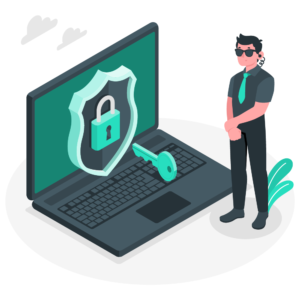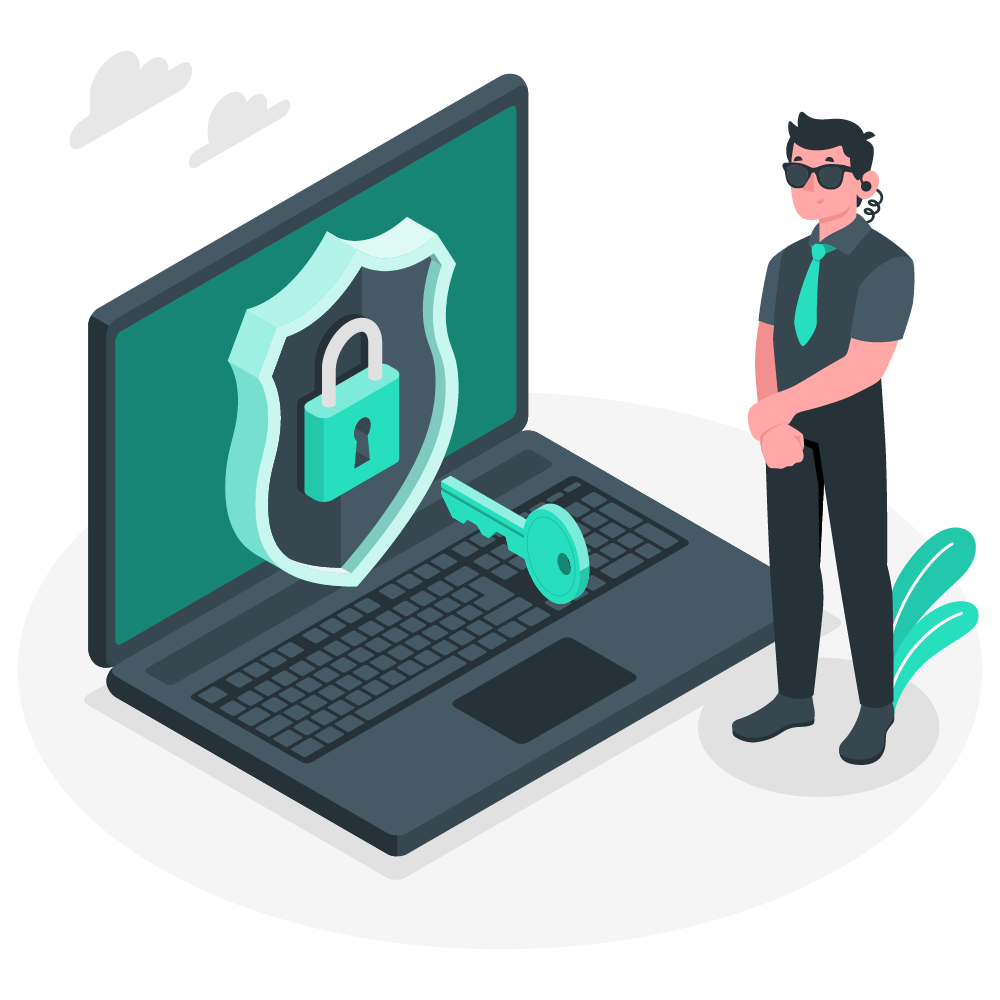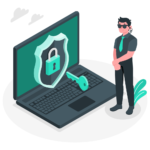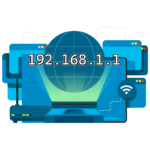Cybersecurity Frameworks
In today’s digital age, cybersecurity is paramount. With increasing cyber threats and attacks targeting businesses and individuals alike, IT professionals must arm themselves with the right tools and strategies. One of the best ways to do this is by understanding and applying cybersecurity frameworks. These frameworks provide structured guidelines for securing information systems and data.
This guide will break down the essential cybersecurity frameworks every IT professional should be familiar with to bolster defenses and ensure organizational security.

More to Explore: Visit our www.climaxtechno.com website for more Programming related resources.
What is a Cybersecurity Framework?
A cybersecurity framework is a standardized set of guidelines and practices that help organizations manage and reduce cybersecurity risks. Frameworks provide a roadmap for identifying, protecting, detecting, responding to, and recovering from cyber incidents.
Cybersecurity frameworks are not one-size-fits-all; they can be tailored to fit the specific needs and challenges of different industries or organizations. The goal is to ensure that security efforts are consistent, efficient, and scalable.
Must Read: How to Earn a Certified Information Systems Security Professional (CISSP) Certification
Why Do IT Professionals Need Cybersecurity Frameworks?
Understanding and implementing cybersecurity frameworks is crucial for IT professionals for several reasons:
- Consistency: Frameworks standardize cybersecurity practices, ensuring a consistent approach across the organization.
- Risk Management: Frameworks help organizations identify vulnerabilities, assess risks, and prioritize defenses.
- Compliance: Many industries are subject to regulatory requirements. Implementing recognized frameworks can help ensure compliance with legal standards.
- Incident Response: Frameworks provide a structured approach for responding to security incidents, minimizing damage and recovery time.
Top 5 Cybersecurity Frameworks Every IT Professional Should Know
There are several cybersecurity frameworks available, each designed to address specific industry needs. Here are five essential frameworks:
1. NIST Cybersecurity Framework (NIST CSF)
The NIST Cybersecurity Framework was developed by the U.S. National Institute of Standards and Technology to provide a comprehensive set of best practices for managing cybersecurity risks. It is widely used by government agencies and private organizations alike.
The framework is divided into five key functions:
- Identify: Recognize the risks and vulnerabilities.
- Protect: Implement safeguards.
- Detect: Monitor for cybersecurity events.
- Respond: Take action when incidents occur.
- Recover: Restore capabilities after an attack.
Why Use NIST CSF?
- Flexible and scalable for different industries.
- Encourages continuous improvement.
- Aligned with existing standards like ISO and COBIT.
Download: The NIST Cybersecurity Framework (CSF) 2.0 PDF
2. ISO/IEC 27001
The ISO/IEC 27001 is an internationally recognized standard for managing information security. It focuses on establishing, implementing, maintaining, and continuously improving an Information Security Management System (ISMS).
The framework outlines how organizations should protect their information assets by identifying risks and taking steps to mitigate them. It also emphasizes the importance of leadership involvement, continual assessment, and employee training.
Benefits of ISO/IEC 27001:
- Ensures compliance with global standards.
- Provides a framework for continual security improvement.
- Demonstrates an organization’s commitment to protecting information.
Must Read: Top IT Certifications to Boost Your Career in 2024
3. COBIT (Control Objectives for Information and Related Technologies)
COBIT is a framework designed by ISACA (Information Systems Audit and Control Association) that focuses on governance and management of enterprise IT. It aims to ensure that IT resources and information systems are properly aligned with an organization’s overall goals and risk tolerance.
COBIT is especially useful for organizations that need to balance risk management with the value delivered by their IT systems. It emphasizes governance, accountability, and continuous monitoring.
Why COBIT?
- Offers a balance between IT risk management and value creation.
- Provides a clear governance model.
- Complements other frameworks like NIST and ISO.
4. CIS Critical Security Controls
The CIS Controls are a set of 18 prioritized actions that organizations should take to improve their cybersecurity posture. These controls are developed by the Center for Internet Security (CIS) and are widely used by organizations looking to implement practical, actionable security measures.
The framework emphasizes basic cyber hygiene and offers technical controls to protect against the most common and impactful attacks.
Key Benefits:
- Offers a clear, prioritized list of actions.
- Designed to protect against real-world cyber threats.
- Scalable and adaptable to various industries and organizational sizes.
Must Read: The 18 CIS Critical Security Controls List
5. PCI DSS (Payment Card Industry Data Security Standard)
For organizations handling credit card transactions, the PCI DSS framework is essential. It is a set of security standards designed to ensure that companies process, store, and transmit credit card information in a secure environment.
The PCI DSS framework covers everything from network security to data protection, making it a vital tool for organizations in the retail and financial sectors.
Why Use PCI DSS?
- Ensures compliance with industry-specific requirements.
- Protects sensitive financial information.
- Reduces the risk of data breaches related to payment transactions.
Choosing the Right Cybersecurity Framework
While these five frameworks are among the most widely recognized, selecting the right one depends on your organization’s size, industry, and specific security needs. Here are a few factors to consider when choosing a cybersecurity framework:
- Industry Requirements: Some industries (like finance and healthcare) have specific compliance standards that require certain frameworks (e.g., PCI DSS or ISO 27001).
- Organizational Size: Small businesses may find frameworks like CIS Controls more practical, while larger enterprises might benefit from the flexibility of NIST or COBIT.
- Risk Tolerance: Your organization’s risk tolerance should dictate how strict and comprehensive your security measures need to be.
Internal Link: How to Get Started with AWS Certifications
How to Implement a Cybersecurity Framework
- Assessment: Start by assessing your current cybersecurity posture. Identify the key risks, vulnerabilities, and gaps in your existing defenses.
- Customization: Choose a framework that aligns with your organization’s goals and risk profile. Tailor it to fit your specific needs.
- Leadership Buy-In: Ensure that leadership understands the importance of cybersecurity and is willing to allocate resources toward framework implementation.
- Employee Training: Security is everyone’s responsibility. Provide comprehensive training so that employees understand the role they play in protecting sensitive data.
- Continuous Monitoring: Cybersecurity is not a one-time task. Continuously monitor, assess, and improve your security measures to stay ahead of emerging threats.
Conclusion
Cybersecurity frameworks are vital tools for IT professionals looking to safeguard their organizations’ digital assets. Whether you’re in the early stages of implementing security measures or looking to refine your existing policies, understanding these frameworks can help you develop a comprehensive and effective cybersecurity strategy.
By aligning your organization with a well-recognized cybersecurity framework, you not only protect your data but also build trust with your clients, customers, and partners.
Related
Discover more from Computer Climax
Subscribe to get the latest posts sent to your email.





